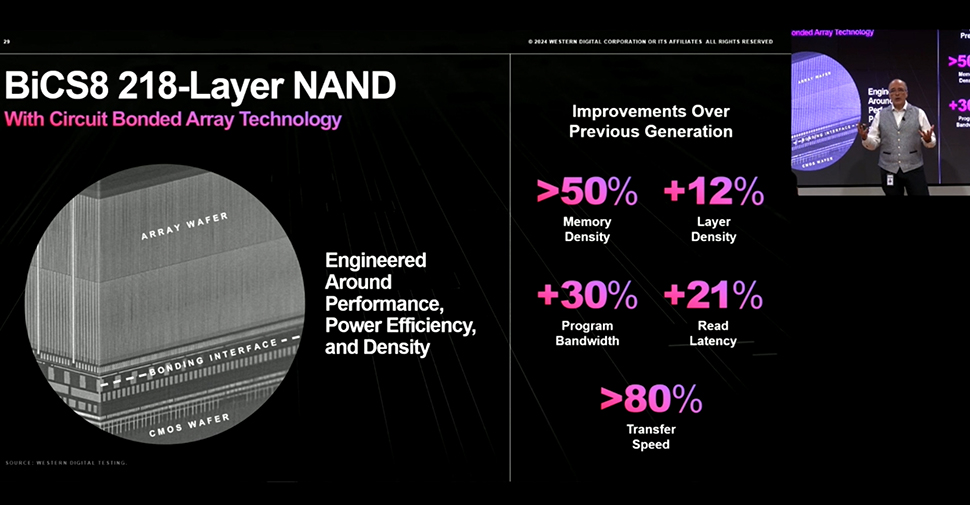WD drops NAND memory bombshell with massive 2Tb flash chips — designed to meet data center needs, they could bring about the new era of 100TB SSDs
Western Digital previews new BiCS8 2Tb QCL

At a webcast for investors titled “New Era of NAND”, Western Digital revealed the world’s highest capacity memory die, the BiCS8 2Tb QCL.
Created in partnership with Kioxia (the two companies are responsible for producing about a third of global bit output in the NAND industry, WD said), it uses the eighth generation BiCs technology (or BiCS8), announced in 2023.
Western Digital revealed a slide which revealed BiCS8 offers 50% improved memory density over the previous generation, as well as 12% better layer density, 30% better program bandwidth, 21% better read latency and >80% transfer speed. The company also stated its BiCS8 IO speed is 50% higher than peers for the same generation.

Smaller than a fingertip
After going into some details about the BiCS8 and Circuit Bonded Array (CBA) technology, Alper Ilkbahar SVP Technology and Strategy, surprised investors by announcing, "I am really, really excited to share with you a preview of the BiCS8 2Tb QLC die. We designed this die to meet the data center and AI storage needs. We are going to shortly announce this product, but I want to share it with you today. This happens to be the world's highest-capacity memory die."
Investors then got a chance to see the new die. “We typically show you a wafer, but I felt a view of a wafer doesn’t convey what we have achieved,” Ilkbahar said, before briefly disappearing from view and returning with the tiny die balanced on his fingertip, which you can see in the photo above. “It stores 2 trillion – 2 trillion! – bits, and this is what I think technology leadership looks like,” Ilkbahar said, in his mic drop moment.
The new flash memory could potentially reshape the high-capacity solid-state drives market, enabling much faster, larger and more energy efficient SSDs. Although details concerning the exact architecture of the 2Tb IC remain unknown for now, Tom’s Hardware points out, “A 256GB 3D QLC NAND device would allow manufacturers to build a 1TB SSD using just four memory ICs and a 2TB drive using eight devices, which greatly lowers their costs. Creating a 16-die package would enable a stunning 4TB in a single chip package.”
We will find out more about the 2Tb QLC NAND when Western Digital formally announces it.
Are you a pro? Subscribe to our newsletter
Sign up to the TechRadar Pro newsletter to get all the top news, opinion, features and guidance your business needs to succeed!
More from TechRadar Pro

Wayne Williams is a freelancer writing news for TechRadar Pro. He has been writing about computers, technology, and the web for 30 years. In that time he wrote for most of the UK’s PC magazines, and launched, edited and published a number of them too.